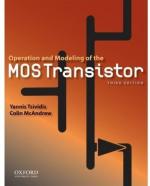|
This section contains 1,195 words (approx. 4 pages at 300 words per page) |

|
The transistor is the fundamental component of most analog and digital circuits. A transistor consists of a piece semiconducting crystal (usually silicon, but sometimes germanium or gallium arsenide) with which impurities such as antimony, bismuth, arsenic, and phosphorous have been mixed by a process called doping. Doping increases the semiconductor's conductivity (tendency to carry electric current) by introducing free electrons that act as negatively-charged current carriers or, conversely, by introducing positively-charged gaps in the semiconductor crystal's electron structure, holes, which act as positively-charged current carriers. The difference between the number of electrons in the outermost orbital of the added impurity (dopant) and that of the host semiconductor determines whether the dopant introduces extra electrons (producing regions of "n-type" semiconductor) or extra holes (producing regions of "p-type" semiconductor).
In 1926 Julius Edgar Lilienfield of New York filed a patent on what is now acknowledged as the blueprint for...
|
This section contains 1,195 words (approx. 4 pages at 300 words per page) |

|


